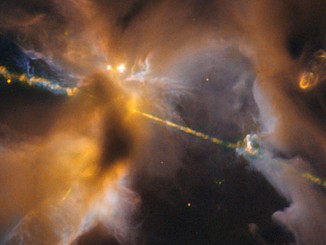
Black holes are thought to range between two extremes: from stellar-mass black holes that form when single, massive stars collapse to the supermassive behemoths millions to billions of times the mass of the Sun. Intermediate-mass holes, with the gravitational heft of hundreds to tens of thousands of stars, are thought to bridge the gap between the two extremes, but only a few candidates have been identified to date.
Likely habitats for intermediate black holes are the cores of globular clusters, the concentrated assemblies of ancient stars that are nearly as old as the cosmos. Researchers using the Hubble Space Telescope observed one of the closest globulars to Earth – NGC 6397 – looking for stellar motions that might indicate the gravitational influence of an intermediate black hole.
Instead, they were surprised to find signs of multiple stellar-mass black holes.
“We found very strong evidence for an invisible mass in the dense core of the globular cluster, but we were surprised to find that this extra mass is not ‘point-like’ but extended to a few percent of the size of the cluster,” said Eduardo Vitral of the Paris Institute of Astrophysics.
Combining the precision measurements from Hubble with data from the European Space Agency’s Gaia space observatory, the researchers concluded the observed motions are best explained by the remnants of massive objects that sank to the center of the cluster after interactions – dynamical friction – with nearby, less massive stars.
“We used the theory of stellar evolution to conclude that most of the extra mass we found was in the form of black holes,” said Gary Mamon, also of the IAP.
While two other recent studies proposed that stellar-mass black holes could populate the cores of globular clusters, Vitral said “ours is the first study to provide both the mass and the extent of what appears to be a collection of mostly black holes in the center of a core-collapsed globular cluster.”



